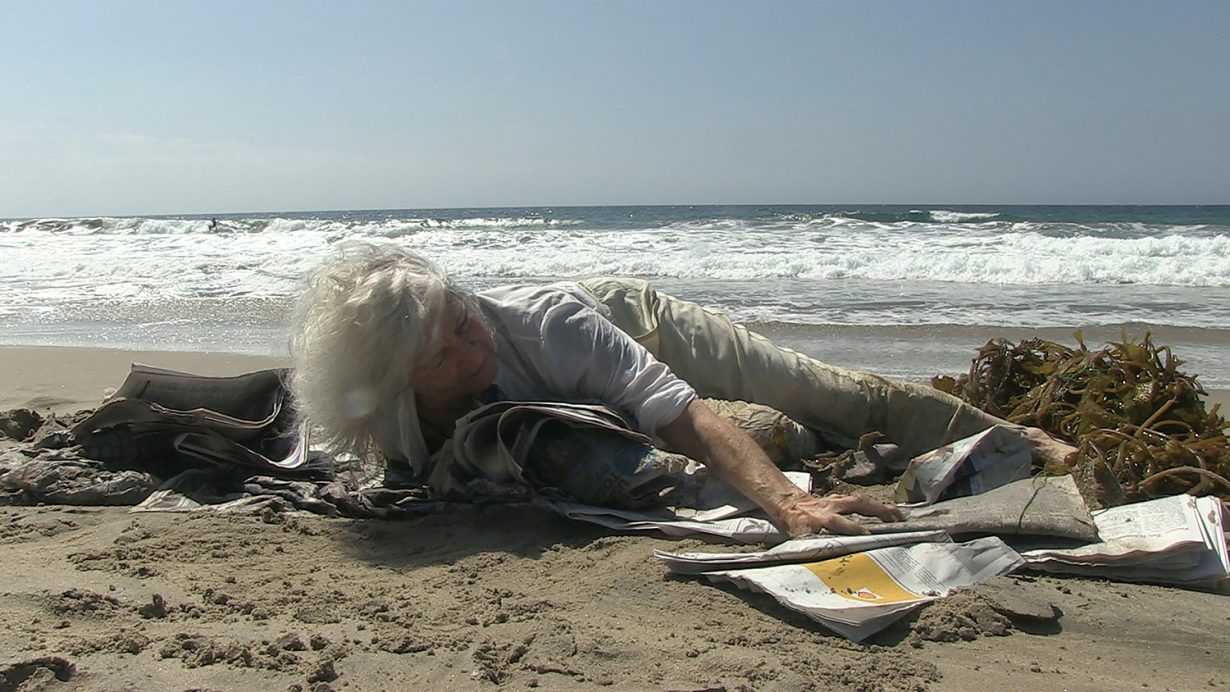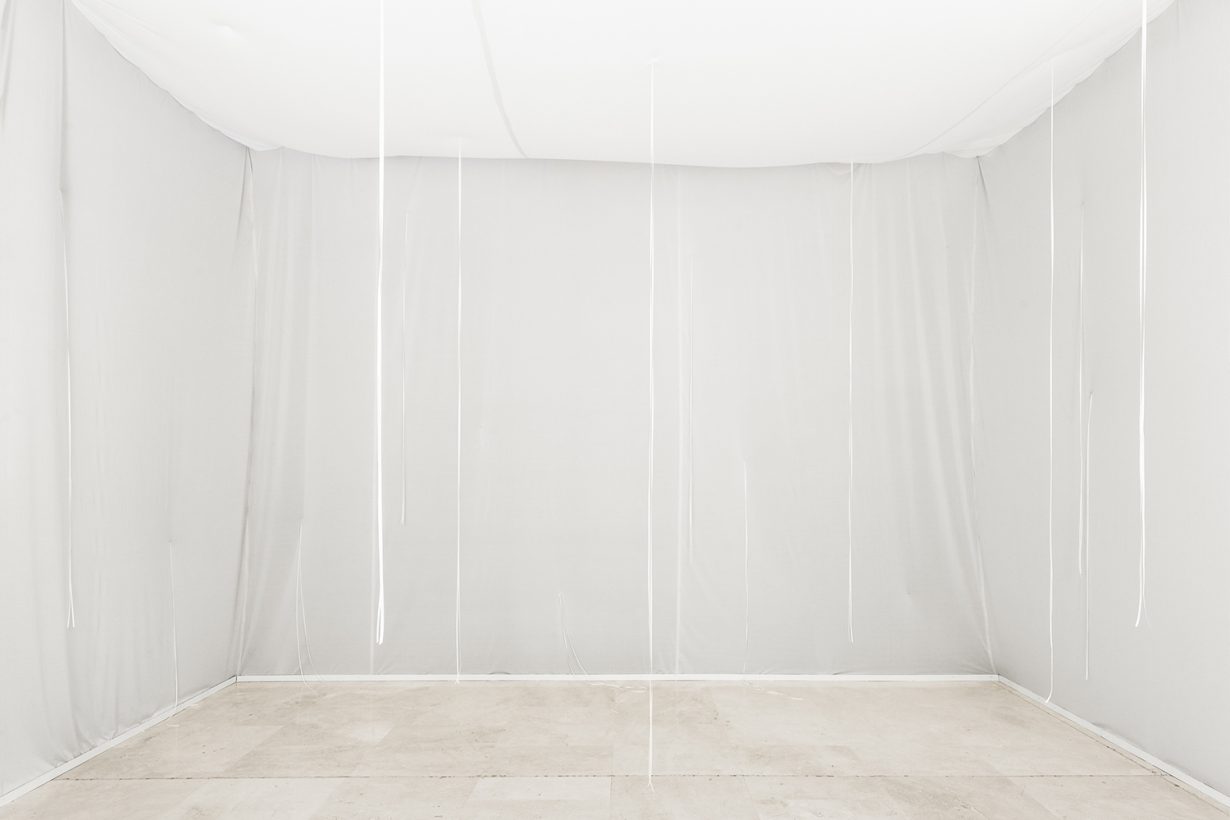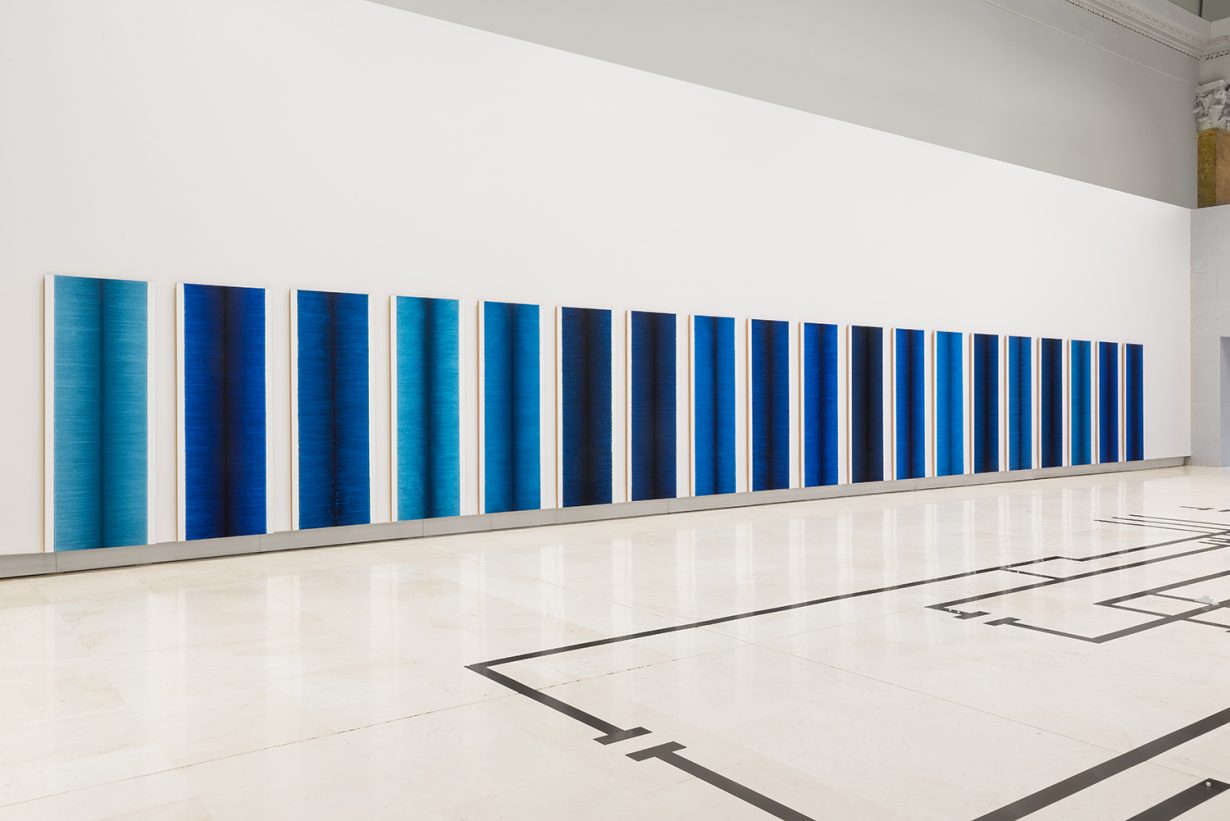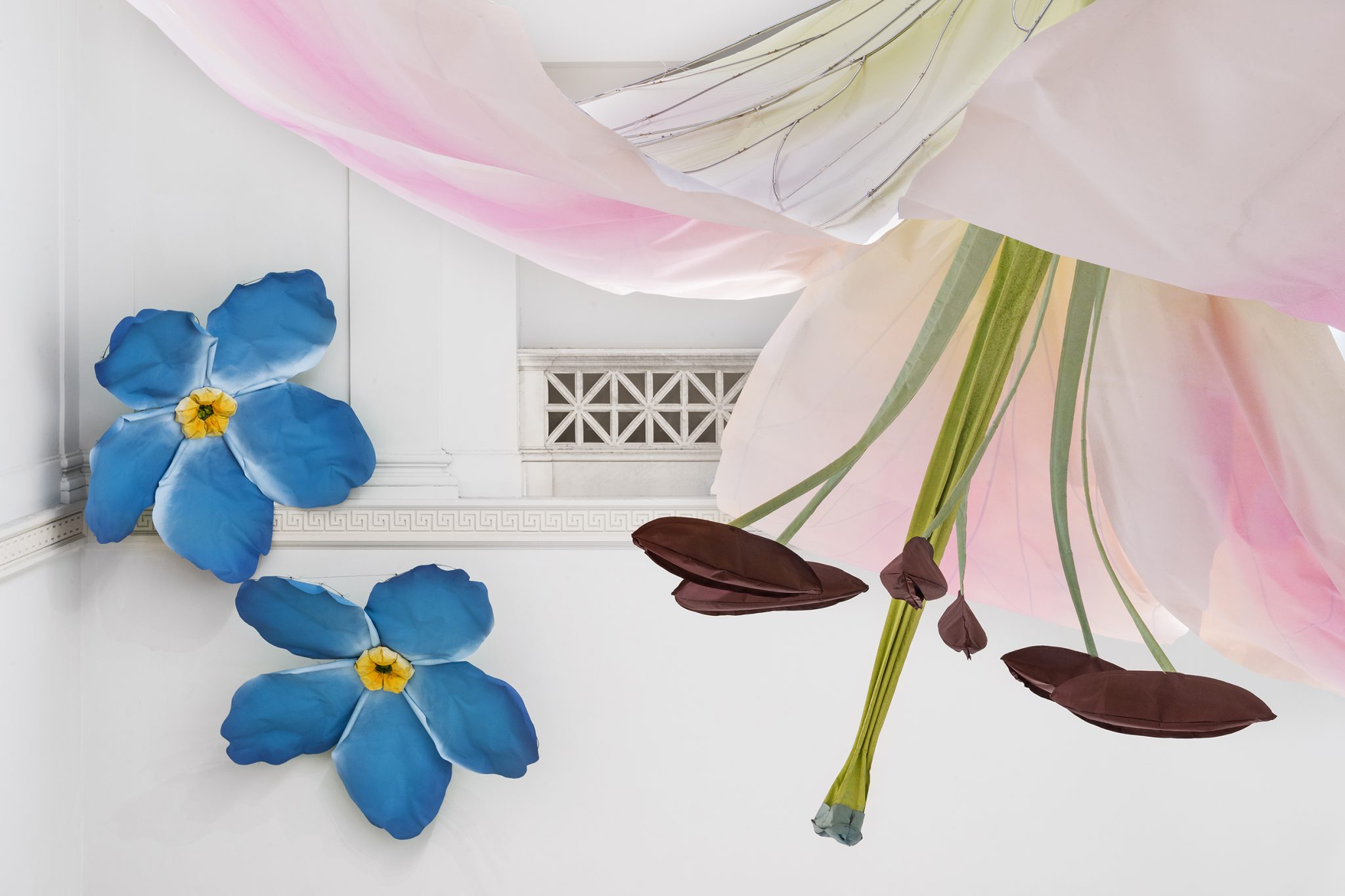Can the institution – with the 2020 edition, ‘FUORI’ – repair its past?
When I arrived in Rome to visit the Quadriennale, Termini train station welcomed me dressed up in green, white and red lights. The same colours, the colours of the Italian flag, were projected on the facades of all the main politically symbolic places in Rome. The concept of homeland and the spirit of national pride seem to be in a state of robust health, reborn with the pandemic crisis; which, given the most obvious effects of that crisis, engendered a feeling of mistrust that stayed with me for the entire trip.

Maybe that’s why the Norma Jeane light installation Corpo di fabbrica (2020), pulsating within the triumphal arched entrance of the Palazzo delle Esposizioni, was so impressive. At night the white light pulses to the rhythm of the artist’s breath: a life signal from somewhere else, generating a spatial and temporal disorientation. It articulates a clear desire on the part of FUORI (which means out) to solve the distinction between inside and outside the institution, and to position itself beyond the representation of power and the normative narrative of tradition. And this makes me realise that this facade also sounds like a programmatic declaration, although with different results.

One naturally has to wonder how an institution like the Quadriennale, which has its roots in the history of Italy’s fascist regime
(it was conceived in 1927 to exalt Italian art as a symbol of Italian supremacy), can repair its past and reframe its primary purpose. With this in mind, curators Stefano Collicelli Cagol and Sarah Cosulich set out to curate the exhibition much as you would care for a baby born out of violence (borrowing the metaphor from the plot of the 1974 novel La Storia, by Elsa Morante, in which a mother lovingly raises a child born from a rape committed by a German soldier). ‘Only for a redeemed mankind has its past become citable in all its moments,’ says Walter Benjamin, and I think that sums up the purpose of the exhibition.

That’s the desire that poignantly emerges from architect Alessandro Bava’s critical reinterpretation of the Quadriennale’s interiors, which transforms the spaces into an ephemeral stage, made of unfinished plasterboard, emptying the violent magnificence of the space, punctuated by the regal yellow marble columns and half pilasters. The end result is that you feel that the space can breathe again, no more so than when you encounter Cloti Ricciardi’s Respiro (1968), a room covered in a white fabric that can be moved by visitors, creating the illusion that the room is alive while also suggesting a stinging critique of the conventional white cube.

The criticism becomes disruptive in Berlin-based Tomaso De Luca’s site-specific Die Schlüssel des Schlosses (2020), an installation that destroys the walls and the ceiling of its space, but returns to subtlety in Lorenza Longhi’s intervention: a paper ceiling that effectively curls up the space and filters the natural light above it. More ironic is the effect of Petrit Halilaj and Alvaro Urbano’s giant flowers, 7 aprile 2020 (2020; the title reflects the date they were supposed to be married, an event postponed due to COVID-19), which hang on a staircase originally intended as a stage for fascist propaganda, and play with the colossal formats that characterise fascist rhetoric and its representations of power.

And truly elegant is the choice to show, in a gallery traditionally designated for sculpture, a dialogue between Irma Blank’s Bleu Carnac (1992) – a series of 38 canvases that fuse something of the vertical sacrality of a megalith and the horizontal legibility of a book – and Micol Assaël’s Stone Broken Circuit (2016) – an open electrical circuit mapped out on the floor in Bakelite, a nonconductive plastic used in the fabrication of early electronic devices, with small white marble cubes dispersed throughout as if to symbolise a certain unpredictability.

In a space that is, thanks to Bava’s intervention, bent, oblique and unstable, a space that criticises the authority of tradition, the bodies that inhabit it best are those that deform themselves to give life, such as Lisetta Carmi’s Il parto (1968), a series of eight images documenting a birth. Or those that so deeply interact with their environment that they become part of it, as in Simone Forti’s video Zuma News (2014), in which she visits a beach and interacts with water, sand and newspapers, demonstrating the papers’ capacity to absorb water and sands’ capacity to become part of the sea. Also present are Michele Rizzo’s sculptures, in a trance from having danced all night, and the bodies, filled with homoerotic desire, that invade Sylvano Bussotti’s drawings and collages. The curatorial narrative is precise and persistent from room to room, leading to an internal balcony where, in the full light that falls through a skylight, Salvo’s candied glimpses of hallucinated cities made of geometrical forms in incandescent colours and lights are the postcard I take away from the exhibition: an act of love for a mutant world in transition and containing many shades – an unexpected trip, much like visiting FUORI itself.
Quadriennale d’Arte 2020: FUORI, Palazzo delle Esposizioni, Rome, until 5 April 2021
